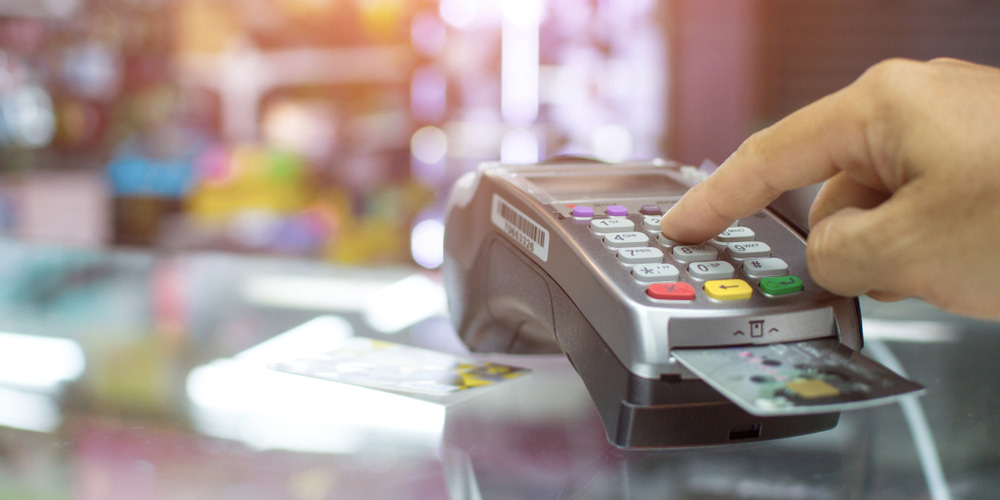[vc_row][vc_column][vc_column_text]It is advantageous for merchants to understand how consumers prefer to pay to products and services. Here is a chart from the Federal Reserve Payment Study done in 2016. Following is an analysis of payment processing and shopping trends.
[/vc_column_text][vc_column_text]
[/vc_column_text][/vc_column][/vc_row][vc_row][vc_column][vc_row_inner][vc_column_inner][vc_column_text]Debit cards are mostly used for small ticket purchases like fast food, gas and groceries. In fact, one third of all debit transactions have an average ticket amount of less than $10; example fast food. As the ticket size climbs over $100 to a few hundred, consumers choose their credit card. As the ticket size climbs over $1,000 then merchants are comfortable paying by check. Merchants prefer taking the checks in order to save on processing fees, but have to also balance the risk of bounced checks for their product or service. High dollar credit cards provide trust to consumers making a large purchase, trust that if they are not happy, they can charge the transaction back.[/vc_column_text][vc_column_text css=”.vc_custom_1555283946055{margin-top: -15px !important;}”]Cash is still the most preferred method of payment, 31% of all transactions. Checks don’t seem to be going away any time soon either; however people don’t carry their checkbooks around for small tickets. Those small transactions have moved to debit cards. Checks are used for large purchases and used by businesses for B2B (business to business) purchases.[/vc_column_text][vc_column_text css=”.vc_custom_1555283955070{margin-top: -15px !important;}”]Most Americans live paycheck to paycheck, which is why they rely so heavily on credit cards to manage their expenses and purchases. This habit is not limited to the poor or lower middle class. 20% of people earning over $200,000 annually say they rarely save money. 25% of people with college degrees are living paycheck to paycheck with less than one month’s pay in a savings account. An interesting fact is that 25% of people simply plan to die before paying off debt.[/vc_column_text][vc_column_text css=”.vc_custom_1555283979133{margin-top: -15px !important;}”]How does our typical family debt break down? For households earning $30,000 to $50,000, 71% have credit card debit. For all households together, 53% have credit card debit. The average credit card debt per household is $5,700 and for those households carrying balances on their credit cards, it is $9,333.[/vc_column_text][vc_column_text css=”.vc_custom_1555283985876{margin-top: -15px !important;}”]And how do consumers prefer to make their credit card payments? Mobile wallet payments have not been adopted as fast as many thought it would. It takes more trouble to pull up an app on a phone then to simply insert a credit card. ACH debit is very popular. People find it most convenient to set up their household bills on a recurring ACH from their credit or debit card. Merchants love ACH as well, because they can generally count on the bill being paid on time versus waiting for a check to arrive in the mail and manually handle it, record it, and drive it over to the bank.[/vc_column_text][vc_column_text css=”.vc_custom_1555283992307{margin-top: -15px !important;}”]Real time payments are not possible yet, but the Federal Reserve is working on how to manage such a system. Currently there is at least a 24 hour delay for credit and debit cards to reach the merchant’s bank account, and longer over the weekends, when banks are closed. The community banks are reluctant to send transactions to the big banks, which are holding up the process of real time payments.[/vc_column_text][vc_column_text css=”.vc_custom_1555284000482{margin-top: -15px !important;}”]Where do consumers like to do their shopping with plastic cards? Amazon is not forcing store closures like many thought. According to the National Retail Federation, US retail sales have been growing at over 4% since 2010. Brick and mortar shops with fast moving products, like food services, are growing at 10% per year. Retail shops with products that move off shelves quickly are growing at 5% per year. That would include grocery stores and pharmacies as an example. Amazon’s growth is leveling out. Retailers have lowered their pricing to match Amazon and Amazon still has shipping expense.[/vc_column_text][vc_column_text css=”.vc_custom_1555284090255{margin-top: -15px !important;padding-bottom: 15px !important;}”]In summary, digital payments are ever more popular as time goes on. Convenience rules decisions. Hopefully the data presented here can help merchant’s plan their future technology for payment processing.[/vc_column_text][/vc_column_inner][/vc_row_inner][/vc_column][/vc_row]
The Blog
Save up to 100% on Your Credit Card Processing Fees!
Categories
- Affiliate Partnerships (10)
- Blog (105)
- Clover and Other POS Tablet Solutions (2)
- Credit Card Processing Scams Against Merchants (2)
- Credit Card Processing/ Merchant Services (146)
- EHR Systems (7)
- Personal Stories (16)
- Point of Sale Computer/Tablet Systems (36)
- Practice Management Bridge (4)
- QuickBooks Payment Integration (5)
- Restaurant POS (16)
- Scams Against Merchants (58)
- Secrets of Success (14)
- Software Integration (1)
- Uncategorized (41)

